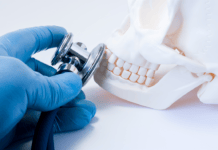Introduced in 2017, the CDT procedure code D4346, “scaling in the presence of generalized moderate or severe gingival inflammation,” is not new. It was introduced to fill the gap for patients with moderate to severe gingival inflammation who require more than a preventive prophylaxis, but exhibit no active bone or attachment loss, so non-surgical periodontal therapy is not appropriate.1
First, let’s define gingival inflammation and the gingival index. The Gingival Index of Löe and Silness grades gingiva with a score of zero to three:1,2
- Grade 0 = Healthy gingiva: No sign of gingival inflammation.
- Grade 1 = Mild inflammation: Slight change in color and slight edema but no bleeding on probing. Inflammation is confined to the interdental papilla.
- Grade 2 = Moderate inflammation: Redness, edema, glazing, bleeding on probing. Inflammation involves both the interdental papilla and the marginal gingiva.
- Grade 3 = Severe inflammation: Marked redness and edema, ulceration, with a tendency to spontaneous bleeding. Inflammation that covers three-fourths or more of the crown structure.
Second, let’s refresh our memory on localized versus generalized. The American Academy of Periodontology (AAP) describes the term localized as 10% to 30% teeth involved.3,4 Generalized is described as “30% or more of the patient’s teeth at one or more sites are involved.”1,4
Third, let’s review the categories for causative factor(s) for gingival inflammation. Knowing the cause helps with prevention and determining treatment.4 As we know, many patients don’t clean interdentally regularly, however, that’s not the only reason they may present with gingival inflammation.
Broadly, there are two categories: biofilm-induced and non-biofilm-induced. From there, they are broken down even further:2,4,5
Biofilm-induced
-
- Associated with biofilm alone
- Mediated by systemic or local risk factors
- Systemic risk factors (modifying factors)
- Smoking
- Hyperglycemia
- Nutritional factors
- Pharmacological agents: Prescription, non-prescription, recreational
- Hormones
- Hematological conditions
- Local risk factors (predisposing factors)
- Biofilm retention factors (i.e., prominent restoration margins)
- Xerostomia
- Drug-influenced gingival enlargement
- Systemic risk factors (modifying factors)
Non-biofilm-induced
-
-
- Genetic/developmental disorders
- Infections
- Bacterial origin
- Viral origin
- Fungal origin
- Inflammatory and immune conditions
- Hypersensitivity reactions
- Autoimmune diseases of the skin and mucous membranes
- Granulomatous inflammatory lesions
- Reactive processes
- Neoplasms
- Premalignancy
- Malignancy
- Endocrine, nutritional, and metabolic diseases
- Traumatic lesions
- Physical/mechanical trauma
- Chemical burn
- Thermal insult
- Gingival pigmentation
- Melanoplakia
- Smoker’s melanosis
- Drug-induced pigmentation
- Amalgam tattoo
-
Understanding D4346
I was first introduced to the D4346 CDT procedure code during my first year as a dental hygienist. The way it was explained to me was it was like a “loophole or cheat code,” but there’s no loophole or cheating involved. So, don’t worry. As mentioned, it was created to fill a gap for patients with moderate to severe gingival inflammation requiring a therapeutic procedure to promote tissue healing, not preventive treatment.1
One of the first points about D4346 is that it has its own identity, meaning it should not be reported in conjunction with prophylaxis, non-surgical periodontal therapy/SRP, or other debridement procedures.1 Also, keep in mind that this procedure code does not replace periodontal maintenance.
The way I picture D4346 is as the middle ground between a prophy and non-surgical periodontal therapy. D4346 could be seen as the CDT procedure code to use for what some call a “bloody prophy” if there is “30% or more of the patient’s teeth at one or more sites are involved.”1 But as soon as active attachment loss (periodontitis) occurs, D4346 is thrown out the window and no longer an option.
The American Dental Association (ADA) Guide to Reporting D4346 does mention that this procedure code is not the go-to for a patient case that would be considered a “hard prophy.” The ADA explains, “If the “hard prophy” is being defined strictly by the amount of time required to complete the procedure, then no D4346 is not appropriate.”1 The ADA further explains, “The D4346 procedure is applicable when there is generalized moderate or severe gingival inflammation in the absence of attachment loss. In other words, the procedure is based on the diagnosis rather than intensity of treatment required.”1
Essentially, the using the D4346 procedure code is influenced by the quantitative and qualitative data you collected through your evaluation and assessments, such as clinical findings (i.e., gingival description), radiographs, and comprehensive periodontal charting. Additionally, intraoral photos can be helpful to document a patient’s overall oral condition.
D4346 is not age-specific, so you may use it on any patient who meets the criteria and would benefit from it. Once you can determine the etiology of the gingival inflammation, you are able to make proper recommendations during oral hygiene instruction.
Have a child or teen in traditional ortho with moderate gingival inflammation and overgrowth? This would be an ideal situation to use the D4346 procedure code. If gingival inflammation is biofilm-induced, education on oral health and demonstrating toothbrushing and interdental cleaning methods alongside product recommendations can be part of your treatment plan. Alongside personalized oral hygiene instruction and recommendations, this patient is on their way to improved health!
If the gingival inflammation is medication-induced, you can start a collaborative approach with the patient and their medical providers. If signs and symptoms of gingival inflammation indicate a possible nutritional deficiency, a patient can be referred to their primary care physician and/or a dietician for a definitive diagnosis through blood tests and receive necessary treatment.
Benefits of Using D4346
I have mentioned before that I am not a fan of the business side of dentistry. I am here to provide high-quality, personalized patient care, but CDT procedure codes come with the territory. You are doing yourself and the patient a disservice if you are using the incorrect CDT procedure code. There are ethical concerns with improper coding, as well.
If a patient presents with generalized moderate to severe gingival inflammation in the absence of periodontitis, procedure code D4346 helps reduce over and underdiagnosing a patient’s periodontal condition and ensures proper treatment. Using the prophylaxis procedure code D1110 in this circumstance would be underdiagnosing, while using D4341 or D4342 periodontal scaling and root planing (non-surgical periodontal therapy) would be overdiagnosing.
For example, if the patient in your chair has active, generalized stage II bone loss (interdental clinical attachment loss of 3-4 mm) and you provide preventive prophylaxis treatment and report the prophylaxis procedure code D1110, you are underdiagnosing and not treating the patient appropriately according to their oral condition. Essentially, you are telling the patient and their insurance provider that they are in a healthy state. When, obviously, they are not. Dental providers should use the procedure code that correlates with how the patient presents according to their current state of health.
Another benefit of using the D4346 procedure code is that you do not have to reschedule your patient to return to complete the treatment. After assessments, if you determine scaling in the presence of moderate to severe gingival inflammation is appropriate, you can provide treatment that day.1
In Closing
The CDT procedure code used should be based on your assessments and critical thinking skills. As a dental provider, patients trust you to provide appropriate treatment. Remember, insurance coverage does not define the treatment you provide. Use the proper CDT procedure codes based on how the patient presents and their oral health condition, not what their insurance covers, as insurance does not dictate treatment.
For more information on the CDT procedure code D4346, please see the ADA Guide to Reporting D4346, Version 6, here.
Before you leave, check out the Today’s RDH self-study CE courses. All courses are peer-reviewed and non-sponsored to focus solely on high-quality education. Click here now.
Listen to the Today’s RDH Dental Hygiene Podcast Below:
References
- ADA Guide to Reporting D4346 [Version 6]. (2023, January 1). American Dental Association. https://www.ada.org/-/media/project/ada-organization/ada/ada-org/files/publications/cdt/v6_adaguidetoreportingd4346_2023jan.pdf
- Rathee, M., Jain, P. (2023, March 27). Gingivitis. StatPearls. https://www.ncbi.nlm.nih.gov/books/NBK557422/
- Staging and Grading Periodontitis. (2018). American Academy of Periodontology. https://www.perio.org/wp-content/uploads/2019/08/Staging-and-Grading-Periodontitis.pdf
- Trombelli, L., Farina, R., Silva, C.O., Tatakis, D.N. Plaque-Induced Gingivitis: Case Definition and Diagnostic Considerations. J Periodontol. 2018; 89(Suppl 1): S46-S73. https://doi.org/10.1002/JPER.17-0576
- American Academy of Pediatric Dentistry Council of Clinical Affairs. (2023). Classification of Periodontal Diseases in Infants, Children, Adolescents, and Individuals With Special Health Care Needs. American Academy of Pediatric Dentistry. https://www.aapd.org/globalassets/media/policies_guidelines/bp_classperiodiseases.pdf













